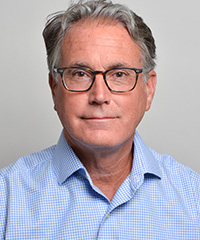 By Mark R. Depman, MD
By Mark R. Depman, MD
Emergency Medicine Physician
UVM Health Network - Central Vermont Medical Center
There is an incredible opportunity before us in Vermont to improve the health and lives of Vermonters by transforming our health care system.
The world is moving away from fee-for-service, where doctors and hospitals are paid for each procedure or test they do, to one where health providers are paid a lump sum to keep their patients as healthy as possible. This transformation will mostly happen in our primary care providers’ offices.
As a physician in the Central Vermont Medical Center Emergency Department, I have been thinking about my role in this change. In much of the country, Emergency Department practice has generally been one where speed and revenue rule, where the incentive, in the jargon, is to “treat ‘em and street ‘em.” Stabilize patients in crisis, get them home or admit them to the hospital, and then hope they stay well enough to avoid the ER again.
We now have an opportunity to change this model. It is time to start looking at emergency room visits not as isolated health care incidents, but as opportunities to connect. I like to say that life, personal choices, and chance all converge in an ER visit. If we could have the time and skills to pause, assess those lives, those choices and those risks, our treatment might involve more than three blood tests, an MRI or an antibiotic. It could, and should, involve deliberately connecting our patients with people and resources that can help them live healthier lives. The framework and environment to make this change is in place due to the opportunity presented by the All-Payer ACO Model agreement with the federal government, and the hard work and engagement of the provider network of OneCare Vermont.
The mechanics of this transformation are complicated even for the most advanced health policy thinkers. I find it useful to consider changes in health care policy as they relate to real Vermonters – and to a typical Emergency Department day.
A young woman in the first trimester of her first pregnancy comes to the ER with abdominal pain, worried about a miscarriage. It’s straightforward work getting an ultrasound and referring her to an obstetrician. But if I don’t recognize that what she’s really worried about is how her opioid dependence may affect her baby and her ability to be a mother, I will have done little to truly help her. If I can get her into a drug treatment program today that’s integrated into her perinatal care, I will have moved the goal post closer toward a healthy mother raising a healthy child in our community.
Out in the remote hills of our county, a neighbor goes to check on an elder living alone and finds her on the floor, helpless since the last evening; she dials 911. In the ER she is found to have pneumonia and sepsis, and I know she will spend days in the ICU. But aren’t the root causes of her ER visit really her social isolation, her lack of transport to routine medical care, and possibly even food insecurity? If the hospital team isn’t ready to recognize and mobilize around solutions to these root causes today by constructing durable connections to community and medical services, she will end up in the same situation – or worse.
And then there’s the man with traumatic injuries after a car accident. He is stabilized and transferred to Burlington for surgery. But does the treatment team recognize the root causes of the accident – his binge drinking, that’s led to a threatened marriage, depression, and now reckless behavior? If we develop the skills to pause and examine the choices and the chances, we will be able to connect this man to focused help geared toward healthy solutions to the life stressors that were thrown his way, and we will all be partners in his journey inside and outside the hospital.
This new approach – treating the whole patient, rather than just one physical problem – will require primary care providers to develop broad team-based care that will make a difference in the lives of their patients. It will also require that non-primary care providers like me think about the unique opportunities we have with patients we may only see once or rarely, to pause, consider, and act on the roots of the problem presented to us. I’m very encouraged by the work we have done to lay the foundation for this transformation. There is much work ahead, but my colleagues and I are ready to do our part.
